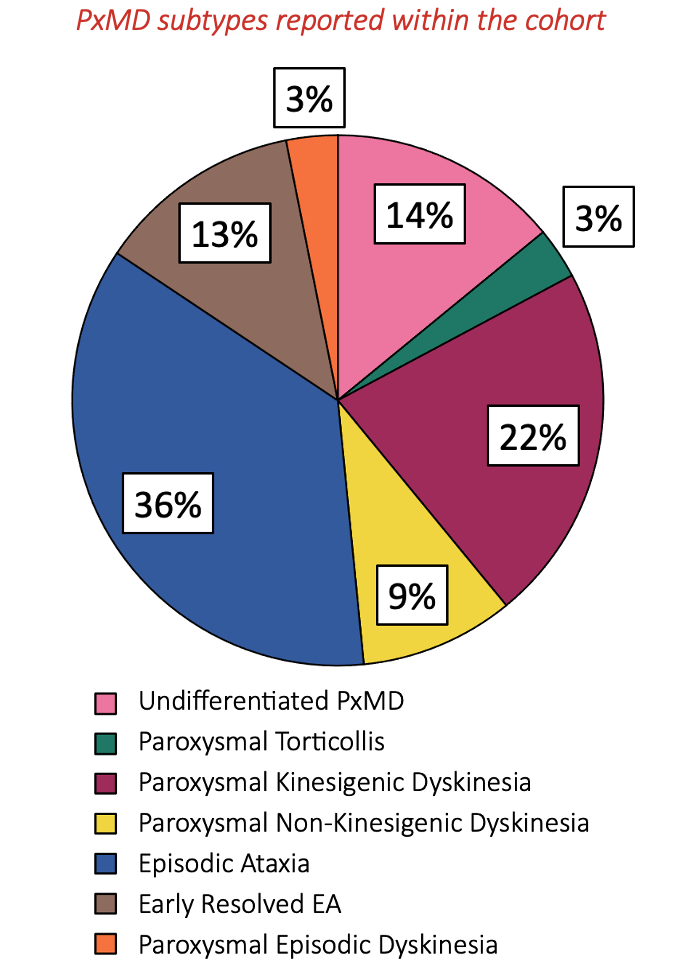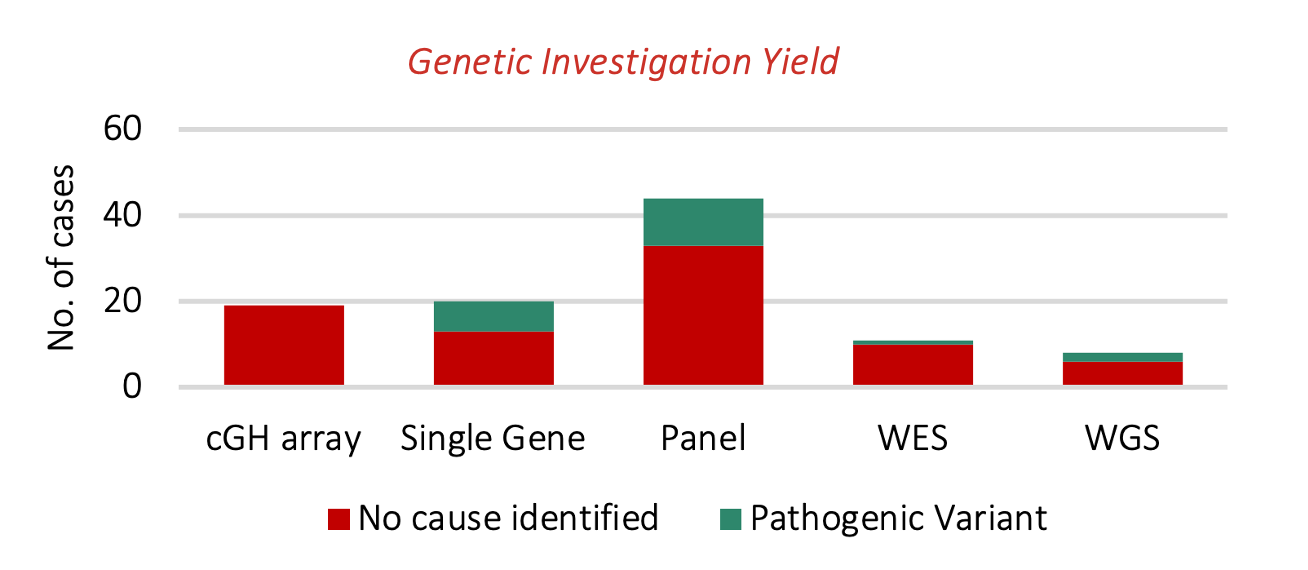Category: Pediatric Movement Disorders
Objective: To clinically characterise paroxysmal movement disorders (PxMD) and determine prevalence in a paediatric population for the first time.
Background: Characterised by episodic involuntary movements, PxMD are divided into paroxysmal dyskinesias (PD) and episodic ataxias (EA). Though reported in medical literature since 1892, much remains unknown about PxMD including exact prevalence. There is a paucity of literature on genetic investigation yield, optimal investigation approach and treatment outcomes in children.
Method: Cross sectional cohort study across paediatric neurology services in the Republic of Ireland incorporating retrospective chart and patient reviews (clinical presentation, treatment response, genetics, neuroimaging, electrophysiology).
Results: Seventy nine cases met inclusion criteria (PD=37, EA=38, AHC=4). Point prevalence for all PxMD was 6.5 cases per 100,000 persons aged less than 18 years(PD 3/100,000, EA 3.1/100,000, AHC 0.3/100,000). Sixty-four cases were reviewed clinically. A cause was identified in 34%(22/64) with no difference between PD (42%,14/33) and EA (26%,8/31) subgroups (χ2=1.96,p=0.16). Highest investigation yield was from single gene testing (35%,7/20) followed by gene panels (25%,11/44), whole genome sequencing (25%,2/8) and whole exome sequencing(9%,1/11). Neuroimaging and EEG were performed in 73%(47/64) and 59%(47/64), respectively. Neither contributed to diagnosis in any case. Variable evolution was seen. In PD, 43% (14/33) resolved and 33%(11/33) improved, with medication accounting for resolution/improvement in 52%(17/33). In EA, 45%(14/31) resolved and 42%(13/31) improved with self-resolution accounting for resolution/improvement in 48%(17/33).
Conclusion: This study determined PxMD prevalence in a paediatric population for the first time. The prevalence (6.5 per 100,000<18 years) is higher than adult population estimates. Despite this, PxMD remain rare with often long times to diagnosis. Our study showed aetiologies are identified in only one third of patients. Encouragingly, large proportions of patients can expect improvement with medications or self-resolution. Future work should focus on education to facilitate earlier diagnosis, identification of new genetic causes, and evaluation of efficacy of therapies.
Oral poster presented at British Paediatric Neurology Association Conference, 24/01/24
Paroxysmal movement disorders subtypes identified
Age of onset of paroxysmal movement disorders
Yield of genetic investigations
To cite this abstract in AMA style:
S. Harvey, N. Allen, S. Byrne, B. Lynch, N. Mcsweeney, S. Neville, O. O'Mahony, M. O'Regan, D. O'Rourke, E. Reade, D. Webb, M. King, K. Gorman. A better understanding of Paediatric Paroxysmal Movement Disorders [abstract]. Mov Disord. 2024; 39 (suppl 1). https://www.mdsabstracts.org/abstract/a-better-understanding-of-paediatric-paroxysmal-movement-disorders/. Accessed December 26, 2025.« Back to 2024 International Congress
MDS Abstracts - https://www.mdsabstracts.org/abstract/a-better-understanding-of-paediatric-paroxysmal-movement-disorders/



